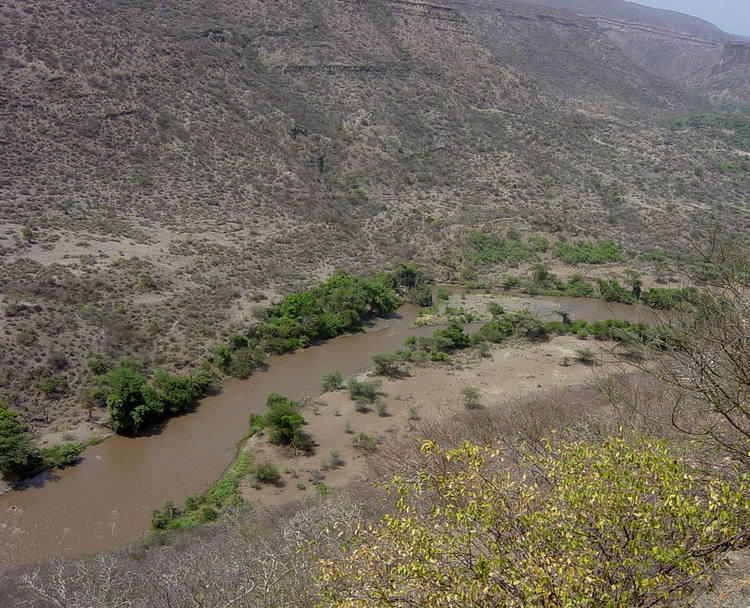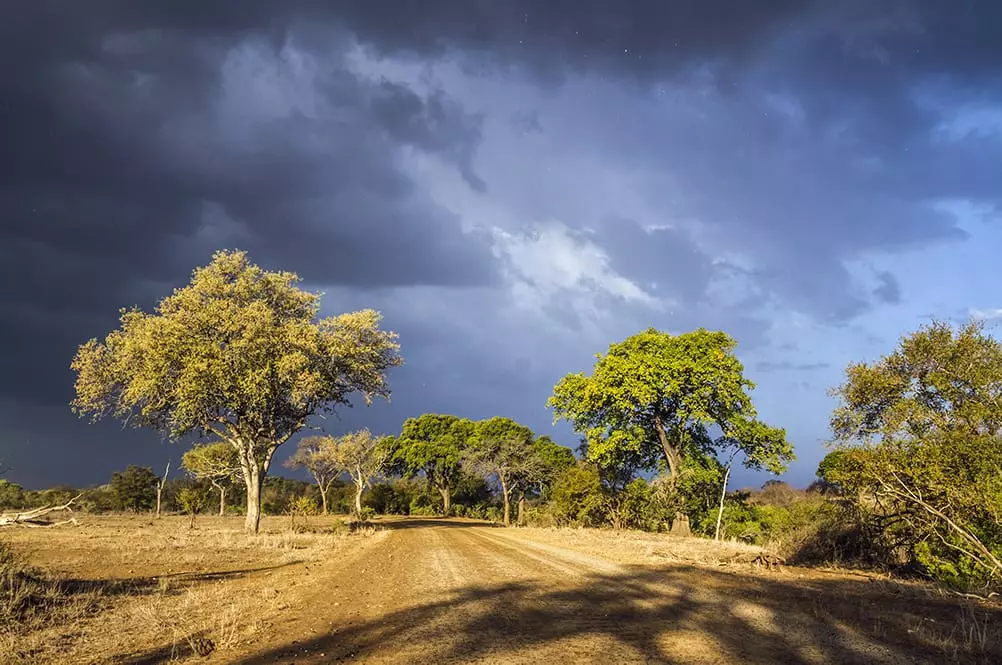It's important to understand the savanna hypothesis of bipedalism when determining Ar ramidus's environment.
Savanna hypothesis: Humans and other hominins became bipedal as an adaptation to savanna environments. For example, seeing predators from further away due to the extra height.
Not every hominin discovered fits into this theory, and its influence in evolution is still questioned.

The Awash River in the now-arid Middle Awash region of Ethiopia.
For years, researchers have debated what kind of environment Ar. ramidus lived in.
They had an idea of what kind of animals lived in the area from other mammalian fossils. They also knew that Ardi's fossil had traits like a moveable big toe and long pelvis allowing for adept climbing. But they weren't sure where, or if, the savanna hypothesis fit in.
Based on analyses of soil and fossils from the Middle Awash region, researchers have come up with two proposals of Ardi's habitat.

Wooded grasslands in Kruger National Park, South Africa.
The group of researchers supporting this theory propose that the Middle Awash was an arid, grassy savanna with sparse tree growth.
This group of researchers did analyses on soils and found remains from grasses. They determined that 40-60% of the ground was covered in grasses, fitting the definition of African grasslands by the United Nations Education, Scientific and Cultural Organization.
Additionally, geochemist Thure Cerling of the University of Utah at Salt Lake City says Aramis soil samples showed the ground to be too arid to support more than a thin forest.
The conclusion: Ar. ramidus lived in grasslands, supporting the savanna hypothesis of bipedalism.
Grassy woodlands in Kibwezi National Forest, Kenya.
On the other hand, researchers at the Middle Awash research group believe that, while Aramis had areas of grasses, Ar. ramidus lived its life in the forest.
In 2010, Dr. Tim D. White said, "We're not focusing on the places Ardi would have seen during her life... Rather, what we're trying to understand is which part of that environment this big primate preferred as its habitat—its address, where it lived."
His Middle Awash research group studied isotopes in fossilized teeth from Ar. ramidus and other mammals to compare their diets.
They found that Ar. ramidus had a more similar diet to woodland animals in the area.
Additionally, they determined that the shape of Ar. ramidus teeth implies a diet of woodland plants and fruits.
The conclusion: Ar. ramidus lived in a grassy forest, disproving the savanna hypothesis.
It's still not known with 100% certainty what habitat Ar. ramidus lived in, but the general consensus in the science world is these creatures lived in a wooded environment.
Up next: A closer look at Ar. ramidus teeth.